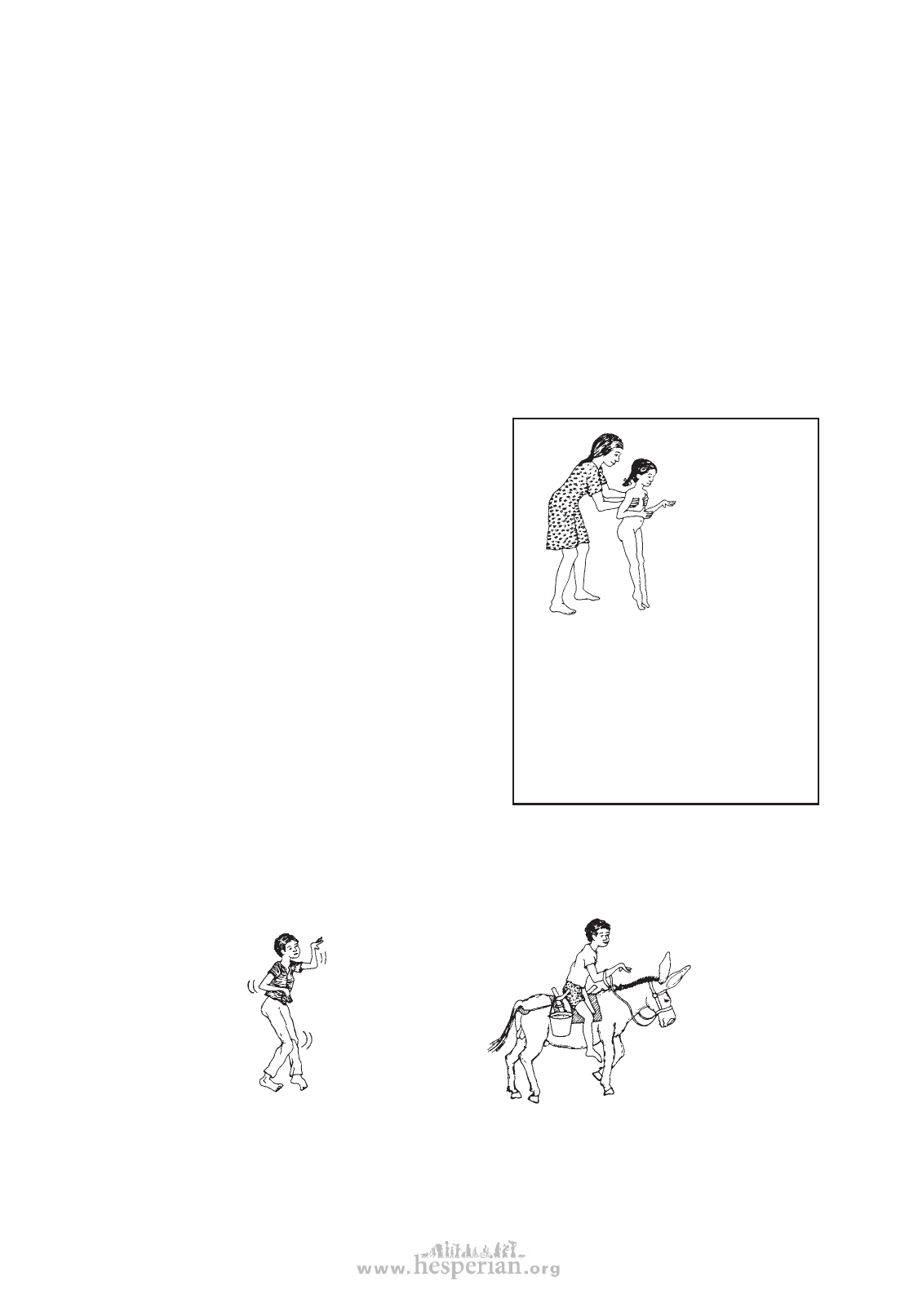
CEREBRAL PALSY
6. Will my child ever be able to walk?
This is often one of the biggest concerns of parents. Walking is important both
functionally and socially. But in terms of the child’s needs, other skills may be more
important. For the child to lead as happy, independent a life as possible, necessary
skills and accomplishments (in order of importance) are:
1. Having confidence in yourself and liking yourself
2. Communication and relationship with others
3. Self-care activities such as eating, dressing, toileting
4. Getting from place to place
5. (And if possible) walking
We all need to realize that walking is not the most important skill a child needs—
and it is certainly not the first. Before a child can walk he needs reasonable head control,
needs to be able to sit without help, and to be able to keep his balance while standing.
Most children with cerebral palsy do learn
to walk, although often much later than normal.
In general, the less severely affected the child is
and the earlier she is able to sit without help, the
more likely she is to walk. If she can sit without
assistance by age 2, her chances for walking
may be good—although many other factors are
involved. Some children begin to walk at age 7,
10, or even older.
Hemiplegic and diplegic children usually
do learn to walk, although some may need
crutches, braces, or other aids.
Many severely affected children may never
walk. We need to accept this, and aim for other
important goals. Whether or not the child may
someday walk, he needs some way to get
from place to place. Here is a true situation that
helped us to realize that other things are more
important
than walking.
The legs stiffen
and the feet
go into a rigid
tiptoe position.
This child is not
almost ready to walk.
A COMMON MISTAKE
When a child with severe brain damage is held
like this, her legs may automatically stiffen
and her feet point down—the so-called ‘tiptoe
reflex’. Because the feet sometimes take jerky
‘steps’, parents think the child is ‘almost ready
to walk’. This is not so. The tiptoe reflex must be
overcome before the child can begin to learn to
walk. Do not hold the child in this position or
make her try to walk. It will only strengthen this
disabling reaction. (See p. 291.)
In a Mexican village, we know 2 brothers, both with cerebral palsy.
Petronio walks
but with great
difficulty.
Walking tires
him and makes
him feel so
awkward that he
stays at home
and does not
play or work.
He is unhappy.
His brother, Luis,
cannot walk. But
since he was small,
he has loved to
ride a donkey.
He uses a wall to
get off and on by
himself. He goes
long distances
and earns money
carrying water. He
is happy.
(Not only does
the donkey take
Luis where he
wants to go, but
by keeping his
legs apart, it helps
prevent knock-
knee contractures.
This way ‘therapy’
is built into daily
activity.)
There are many different ways to help children who cannot walk, or who walk with
difficulty, get where they want to go. These include wheelboards, wagons, wheelchairs,
special walkers, and hand-pedal tricycles. Many of these are described in PART 3 of this
book (see the Index).
93
disabled village children